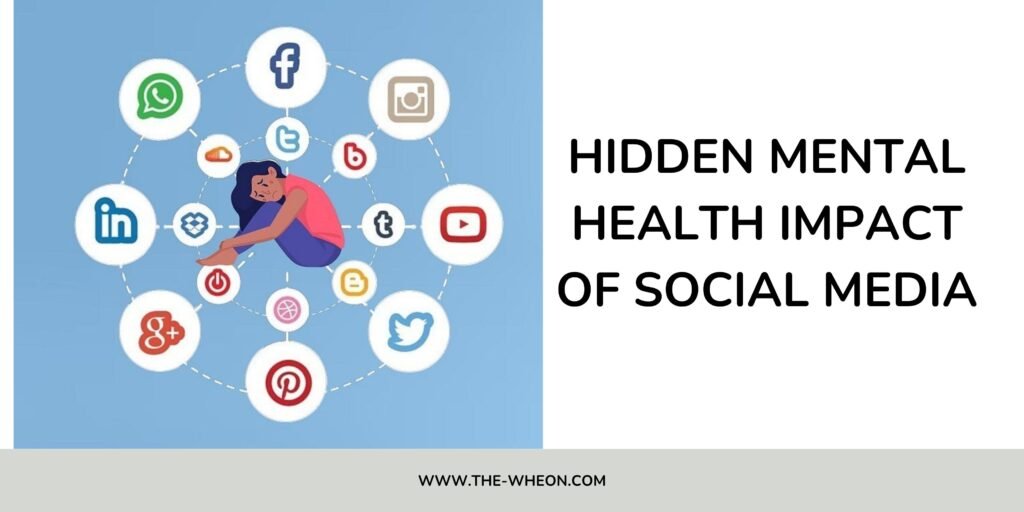In today’s hyper-connected world, social media platforms have become an integral part of daily life. But recent research is shedding light on a deeper reality: The effects of social media on mental health are more subtle, pervasive, and complex than many of us realize. At Wheon.com, we believe that understanding these hidden impacts is crucial—because mental wellness is foundational to thriving in the digital age.
The Double-Edged Sword of Connectivity
On the surface, social media offers undeniable benefits: connection across distance, peer support, inspiration, and opportunities to stay informed. Indeed, some studies show that social media can help reduce feelings of loneliness, encourage self-disclosure, and even foster communities of shared experience.
However, the more we dig, the more we see that the relationship between social media use and mental health isn’t just “good vs bad.” It’s nuanced, contextual, and mediated by how, when, and why we engage.
Uncovered Links: What the Latest Research Shows
1. Depression, Anxiety & Internalizing Problems
Multiple meta-analyses and longitudinal studies have revealed a statistically significant association between heavier social media use and higher rates of depressive and anxiety symptoms—especially among adolescents and young adults. For instance, one systematic review noted that while causation is unclear, higher social media usage tends to co-occur with increased feelings of sadness, worry, or stress. Studies using natural experiments—such as the staggered introduction of Facebook at different colleges—found that access to the platform correlated with measurable increases in depressive symptoms and anxiety disorder prevalence.
2. Sleep Disruption & Cognitive Strain
One often overlooked pathway is sleep. Engaging with screens late into the night, exposure to blue light, and emotional arousal from social media content all disrupt sleep quality and duration. Poor sleep, in turn, is a well-documented risk factor for mood disorders, impaired memory, and reduced executive function.
3. Social Comparison, FOMO & Self-Esteem Erosion
Social media often encourages comparison—comparing our behind-the-scenes with others’ highlight reels. These upward social comparisons foster feelings of inadequacy, envy, and low self-worth. The “fear of missing out” (FOMO) compounds this emotional burden, linking higher social media engagement to anxiety and stress about being excluded or “left behind.”
4. Cyberbullying, Harassment & Toxic Content Exposure
The anonymity and reach of social media make it a breeding ground for cyberbullying, harassment, and negative interactions. For victims, the psychological toll is real: increased rates of depression, anxiety, and even self-harm ideation. Moreover, exposure to disturbing content—violent imagery, self-harm content, or misinformation—can exacerbate mental distress through vicarious trauma, triggering emotional dysregulation in sensitive users.
5. Addictive Patterns & Loss of Control
Emerging research suggests that it’s not merely screen time but compulsive and uncontrolled use that carries the greatest risk. A recent longitudinal study tracked adolescents and found that those who developed addictive screen/social media behaviors had significantly higher risk of suicidal ideation and emotional problems—even more so than mere total time spent. In other words: the emotional distress arises when usage crosses the threshold of control.
6. The Misinformation Factor
Another underappreciated aspect is the mental burden of misinformation. A recent study applying a hybrid transformer model showed that exposure to misleading or false content on social media correlates with increased anxiety, stress, and paranoia. This suggests that not only what we view, but how trustworthy it is, influences our psychological resilience.
At the same time, hopeful signs emerge: Research into the “Papageno effect” (positive media narratives that reduce suicidal ideation) indicates that exposure to mental health coping stories on social media can lead to reduced stress and depression—highlighting platforms’ potential as vehicles for positive change.
Why Many Effects Have Remained Hidden
- Cross-sectional dominance: Many studies rely on cross-sectional data, making causality hard to establish.
- Complex mediating variables: Socioeconomic status, personal resilience, offline social support, personality, and preexisting vulnerabilities all confound simple associations.
- Nonlinear thresholds and tipping points: Moderate use might be harmless or beneficial, while excessive/compulsive use triggers harm.
- Heterogeneity in patterns of use: Passive scrolling, active posting, content type (positive, negative, neutral), and platform differences all modulate impact.
- Delayed effects: Some mental health consequences manifest slowly—beyond what short-term studies can detect.
What Organizations & Platforms Like Wheon.com Can Do
At Wheon.com, as we care deeply about the digital lives and well-being of our users, there are several strategic pathways to mitigate risks and enhance benefits:
- Design for mental health: Build features that nudge healthy behaviors—e.g. usage reminders, “pause” modes, positive content suggestions, and safe disengagement cues.
- Content curation & moderation: Prioritize algorithms that surface supportive, credible, and uplifting content while suppressing harassment, misinformation, or emotionally triggering material.
- Mental health resources integration: Provide in-platform access to self-help tools, crisis support lines, and vetted educational content.
- Digital literacy & user education: Empower users with knowledge—help them recognize FOMO, comparison traps, and compulsive use, and teach them healthier engagement habits.
- Encourage “social media hygiene”: Promote digital boundaries (e.g. no-phone zones, scheduled breaks, screen-free times) and mindful usage.
- Collaborate with researchers: Share anonymized usage data (ethically & securely) to facilitate better research, evaluation, and continuous improvement.
Toward a Balanced Digital Future
Social media will not (and should not) be eliminated from our lives—its connective and expressive powers are real. But the new research underscores that mental health matters, and we must respect that digital behavior has hidden costs.
For Wheon.com health news, this is not just a theoretical concern—it’s part of our mission. We choose to build responsibly, champion well-being, and illuminate the unseen ways digital life shapes mind and mood.
By embracing evidence, design intentionality, and empathy, platforms can shift from being passive conduits to active stewards of mental health. Because when mental wellness thrives, digital communities flourish.
